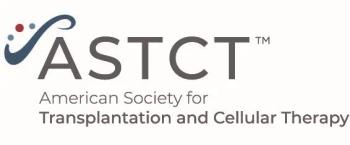
CD86 Expression Correlates With Relapse in CML Patients
CML patients who have high expression of the T-cell inhibitory receptor (CTLA-4)-ligand CD86 on plasmacytoid dendritic cells have a higher risk of relapsing after discontinuing therapy with a tyrosine kinase inhibitor.
Chronic myeloid leukemia (CML) patients who have high expression of the T-cell inhibitory receptor (CTLA-4)-ligand CD86 on plasmacytoid dendritic cells (pDC) have a higher risk of relapsing after discontinuing therapy with a tyrosine kinase inhibitor (TKI), according to a new study.
“Even with undetectable BCR-ABL mRNA levels patients frequently relapse after TKI cessation,” wrote study authors led by Andreas Burchert, MD, of University Hospital Marburg in Germany. “An upfront prediction of relapse probability following TKI cessation in deep molecular remission … has remained largely elusive, as has the biology underlying CML persistence and treatment-free remission.”
Previous work has suggested that immune-mediated repression of CML regrowth may contribute to treatment-free remission, and pDC activation status specifically could play a role. In the new study, the researchers analyzed CD86 expression on pDC in 14 patients in treatment-free remission, 130 patients in molecular remission in the CML-V study, and then prospectively in 190 patients included in the EURO-SKI trial. The results were
In the CML-V study patients, the researchers found that those patients in molecular remission had significantly higher CD86+pDC frequencies than normal donors. Patients in treatment-free remission, meanwhile, had consistently low CD86+pDC.
In the EURO-SKI patients, CD86+pDC were measured prior to TKI cessation to establish a baseline, and patients were then monitored for relapse. Again, these patients had higher CD86+pDC frequency than normal donors (median 20.8% vs 7.3%; P = .0024).
Patients who maintained treatment-free remission for 12 months after TKI cessation (73 patients) had significantly lower median frequency of CD86+pDC at baseline compared with those who relapsed in that period (49 patients; P = .0144). Those who relapsed also had higher absolute CD86+pDC counts at baseline, at 86.1 per 105 lymphocytes compared to 50.6 per 105 lymphocytes (P = .0147). Both the count and frequency were positively correlated with relapse-free survival probability.
A CD86+pDC count of 95 was established as a cutoff for relapse-free survival probability. For patients above that threshold, the 1-year relapse-free survival probability was 30.1%, compared with 70.0% for those below it. TKI pretreatment duration was no different in relapsing or non-relapsing patients in this cohort, but only those patients at or below the 95 CD86+pDC cutoff had a significantly better relapse-free survival if treated for at least 8 years.
“We provide for the first time evidence that relapse biology after TKI discontinuation depends on the quantity of activated pDC and a T-cell exhaustion phenotype, rather than TKI pretreatment duration per se,” the authors concluded. They suggested that immune checkpoint inhibition with PD1- or CTLA-4-blocking antibodies could be a novel therapeutic option in these patients, and a randomized trial is being planned to evaluate the idea.
Newsletter
Stay up to date on recent advances in the multidisciplinary approach to cancer.

















































































